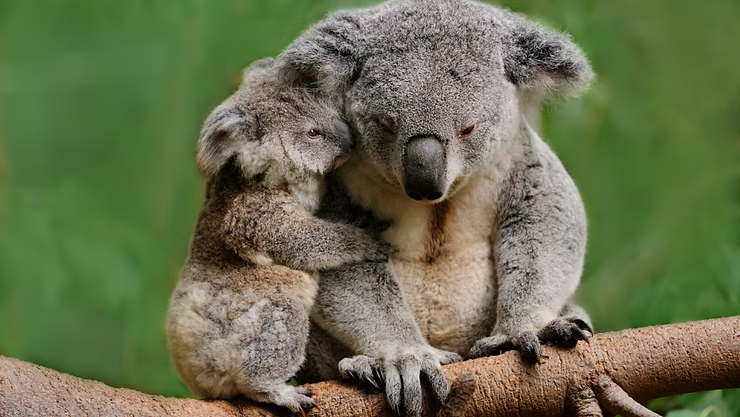All About Koalas: Fascinating Facts and Conservation
Koalas are unique marsupials native to Australia, known for their sleepy habits, eucalyptus-based diet, and remarkable adaptations. Despite their cuddly appearance, they face significant threats from habitat loss and climate change.
Key Takeaways
- Koalas are marsupials, not bears.
- They sleep up to 18 hours a day.
- Koalas feed exclusively on eucalyptus leaves and rarely drink water.
- They have fingerprints almost identical to humans.
- Koalas are listed as vulnerable due to habitat loss and climate change.
What Makes Koalas Unique
Koalas Are Not Bears
- Related to kangaroos and wombats.
- Sleep extensively, only spending a few hours eating.
- Live primarily in open eucalyptus woodlands.
- Fingerprints nearly identical to human fingerprints.
Koalas Sleep a Lot
Koalas sleep up to 18 hours a day, using the remaining time to feed on eucalyptus. Their unique digestive system extracts maximum energy from low-nutrient leaves, allowing them to conserve energy efficiently.
Unique Digestive Systems
- Long digestive tract breaks down tough eucalyptus fibers.
- Gut microbiome detoxifies eucalyptus leaves.
- Slow metabolism conserves energy for survival on a specialized diet.
Koala Habitat and Diet
Native to Australia
Koalas inhabit eucalyptus forests and rely almost entirely on these leaves for food and hydration.
Koalas Feed on Eucalyptus Leaves
- Leaves provide nutrients and moisture.
- Picky eaters, only certain eucalyptus species.
- Spend about three hours per day eating.
Koala Behavior and Communication
Mostly Nocturnal
Koalas are active at night, using sharp senses to navigate and forage, resting safely in trees during the day.
Solitary Animals
Koalas prefer solitude but communicate through vocalizations such as grunts, bellows, and snorts.
Vocalizations
- Low-frequency bellows attract mates.
- Males have deep calls; females emit high-pitched wails when ready to mate.
Koala Reproduction and Life Cycle
Slow Reproduction Rate
Koalas reproduce slowly, usually one joey every two years. Limited nutrients and long gestation contribute to this slow rate.
Born Underdeveloped
Joeys are tiny, hairless, and crawl into the mother’s pouch for six to seven months before riding on her back.
Stay with Mother for Long Time
Koalas remain with mothers up to 12 months, learning essential survival skills during this period.
Koala Conservation and Threats
Vulnerable Status
Koalas are listed as vulnerable due to habitat loss, urbanization, and climate change affecting eucalyptus availability.
Habitat Loss
- Deforestation reduces food and shelter.
- Increased risk of predation and vehicle collisions.
- Wildlife corridors and habitat restoration are crucial for survival.
Climate Change
Rising temperatures and extreme weather threaten eucalyptus trees and koala health, increasing disease susceptibility.
In Conclusion
Koalas are fascinating marsupials with unique adaptations, from their fingerprints to their specialized diet. Protecting their habitats is vital to ensure their survival for future generations.
Frequently Asked Questions
- Are koalas bears? No, they are marsupials.
- How much do koalas sleep? Up to 18 hours per day.
- What do koalas eat? Mainly eucalyptus leaves.
- Do koalas drink water? No, they get moisture from leaves.
- Are koala fingerprints like human fingerprints? Yes, virtually indistinguishable.
- Are koalas social? No, they are solitary.
- How long do joeys stay with their mothers? Up to 12 months.
- Major threats to koalas? Habitat loss and climate change.

